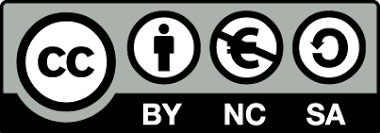บทคัดย่อ
การวิจัยผสานวิธีครั้งนี้มีจุดประสงค์เพื่อศึกษาสถานการณ์การใช้แอปพลิเคชันสุขภาพ และปัจจัยเชิงสาเหตุทั้งที่ส่งเสริมและอุปสรรคของการใช้แอปพลิเคชันสุขภาพของคนไทยสำหรับจัดทำข้อเสนอการออกแบบแอปพลิเคชันสุขภาพเพื่อการเข้าถึงบริการสุขภาพสำหรับคนไทยกลุ่มต่าง ๆ ข้อค้นพบสำคัญ มีดังนี้ ระยะที่ 1 การวิจัยเชิงปริมาณเพื่อสำรวจสถานการณ์การใช้แอปพลิเคชันสุขภาพ และปัจจัยเชิงสาเหตุความรอบรู้ด้านสุขภาพดิจิทัลที่มีต่อการใช้แอปพลิเคชันสุขภาพของคนไทย สถานการณ์การใช้แอปพลิเคชันสุขภาพของคนไทย พบว่า ร้อยละ 70.62 ของคนไทยมีการติดตั้งแอปพลิเคชันสุขภาพ โดย Gen Z เป็นผู้ใช้มากที่สุด (ร้อยละ 87.7) “หมอพร้อม” เป็นแอปพลิเคชันสุขภาพที่ได้รับความนิยมสูงสุด (ร้อยละ 75.46) ส่วนใหญ่ใช้เพื่อบันทึกข้อมูลสุขภาพ (ร้อยละ 43.58) และตรวจสอบสิทธิการรักษา (ร้อยละ 41.53) อุปสรรคหลักของการไม่ใช้แอปพลิเคชันสุขภาพ ได้แก่ ไม่มีความรู้ในการใช้ (ร้อยละ 44.07) และไม่มีเวลา (ร้อยละ 36.85) คุณสมบัติของแอปพลิเคชันสุขภาพที่ทำให้คนใช้มากที่สุด คือ เข้าถึงสะดวก (ร้อยละ 39.65) และใช้งานง่าย (ร้อยละ 34.14) ส่วนปัจจัยเชิงสาเหตุของ การใช้แอปพลิเคชันสุขภาพ พบว่า ความรอบรู้ด้านสุขภาพดิจิทัล มีอิทธิพลทางตรงต่อพฤติกรรมการใช้แอปพลิเคชันสุขภาพมากที่สุด (สัมประสิทธิ์อิทธิพล เท่ากับ 0.63) ปัจจัยทางสังคม และความคาดหวังต่อแอปพลิเคชัน มีอิทธิพลทางตรงเท่ากัน (สัมประสิทธิ์อิทธิพล เท่ากับ 0.16) ระยะที่ 2 การวิจัยเชิงคุณภาพเพื่อทำความเข้าใจประสบการณ์การใช้แอปพลิเคชันสุขภาพรวมทั้งปัจจัยส่งเสริมและปัจจัยขัดขวางของการใช้แอปพลิเคชันสุขภาพของคนไทย คนไทยใช้แอปพลิเคชันสุขภาพเพราะมีความเชื่อ 5 ประการ ได้แก่ (1) เชื่อว่ามีประโยชน์ (2) เชื่อว่าเป็นภารกิจที่ต้องทำ (3) เชื่อว่าจำเป็นและตอบสนองความต้องการ (4) เชื่อว่าให้คำตอบได้รวดเร็ว (5) เชื่อมั่นว่าพัฒนาจากรัฐบาล ส่วนการให้คุณค่าและความสำคัญของการใช้แอปพลิเคชันสุขภาพ มี 3 ประเด็น ได้แก่ (1) แอปพลิเคชันที่สร้างความน่าเชื่อถือให้ผู้ใช้ (2) แอปพลิเคชันที่ทำให้ชีวิตง่ายขึ้น สะดวกสบาย ประหยัดเวลา และ (3) แอปพลิเคชันที่มีติดตัวไว้ให้อุ่นใจ ปัจจัยส่งเสริมการใช้แอปพลิเคชันสุขภาพ มี 7 ประเด็น ได้แก่ (1) มีการเข้าถึงได้หลากหลายช่องทาง (2) มีระบบการจัดการความปลอดภัยของข้อมูล (3) สารสนเทศต้องน่าเชื่อถือ (4) มีศูนย์รวมแอปพลิเคชันสุขภาพ (5) มีการประชาสัมพันธ์แอปพลิเคชันอย่างทั่วถึง (6) กำหนดให้เป็นแอปพลิเคชันหลักที่ทุกคนต้องมีติดตัว และ (7) ออกแบบแอปพลิเคชันให้ประทับใจผู้ใช้ ส่วนปัจจัยขัดขวางการใช้แอปพลิเคชันสุขภาพ มี 7 ประเด็น ได้แก่ (1) ไม่เห็นความจำเป็นของการใช้ (2) ไม่เคยได้ยิน/ไม่รู้จัก (3) ไม่เป็นหนึ่งเดียวกัน "กระจัดกระจาย" (4) ไม่มั่นใจในความปลอดภัย (5) ไม่เป็นมิตรต่อการใช้ (6) มีทางเลือกอื่นที่ดีกว่า และ (7) มีข้อจำกัดด้านอุปกรณ์ ระยะที่ 3 ข้อเสนอการออกแบบแอปพลิเคชันสุขภาพเพื่อการเข้าถึงบริการสุขภาพของคนไทยกลุ่มต่าง ๆ แนวทางการพัฒนาแอปพลิเคชันสุขภาพเพื่อการเข้าถึงบริการสุขภาพของคนไทยกลุ่มต่าง ๆ แบ่งออกเป็น 4 มิติ 8 กลยุทธ์ (1) มิติการออกแบบส่วนติดต่อผู้ใช้ที่ตอบโจทย์ความต้องการ ประกอบด้วย ออกแบบแอปพลิเคชันที่รองรับความต้องการและเป็นมิตรกับผู้ใช้ (2) มิติการพัฒนาระบบที่ปลอดภัยและเชื่อมต่อ ประกอบด้วย ออกแบบระบบที่ปลอดภัย และคุ้มครองความเป็นส่วนตัว เชื่อมต่อกับระบบสุขภาพส่วนกลาง และสร้างเอกลักษณ์ให้น่าเชื่อถือและจดจำง่าย (3) มิติการนำเสนอข้อมูลที่ถูกต้องและเข้าใจง่าย ประกอบด้วย ออกแบบเนื้อหาที่มีหลักฐานทางการแพทย์รองรับ และ (4) มิติการสร้างกลไกที่เหมาะกับบริบทผู้ใช้ ประกอบด้วย ออกแบบระบบที่สร้างแรงจูงใจในการใช้งาน และส่งเสริมการมีส่วนร่วมของผู้ใช้ กระบวนการพัฒนาแอปพลิเคชันสุขภาพอย่างยั่งยืน มี 5 ขั้นตอน ได้แก่ ขั้นที่ 1 พัฒนาโดยเข้าใจความต้องการผู้ใช้ ขั้นที่ 2 ทดสอบกับกลุ่มเป้าหมายที่หลากหลายครอบคลุมทุกช่วงวัยและระดับความคุ้นเคยกับเทคโนโลยี ขั้นที่ 3 บูรณาการกับระบบสุขภาพที่มีอยู่โดยเชื่อมโยงกับฐานข้อมูลสุขภาพแห่งชาติอย่างปลอดภัย ขั้นที่ 4 วางแผนการเปิดตัวและประชาสัมพันธ์ ใช้กลยุทธ์ดิจิทัลผ่านผู้มีอิทธิพลและโซเชียลมีเดีย และขั้นที่ 5 ประเมินผลเพื่อพัฒนาอย่างต่อเนื่องโดยรับฟังข้อเสนอแนะ และมีแผนพัฒนาระยะยาวที่ชัดเจน กล่าวโดยสรุป ข้อเสนอเชิงนโยบายเพื่อพัฒนาแอปพลิเคชันสุขภาพอย่างยั่งยืน คือ 1) สร้างศูนย์รวมแอปพลิเคชันสุขภาพ เพื่อลดความกระจัดกระจายและสร้างมาตรฐาน 2) พัฒนาทักษะความรอบรู้ด้านสุขภาพดิจิทัลโดยเฉพาะกลุ่ม Gen X และ Baby Boomer 3) กำหนดมาตรฐานความปลอดภัยข้อมูลเพื่อสร้างความเชื่อมั่นในการใช้งาน และ 4) ส่งเสริมการพัฒนาแอปพลิเคชันที่ใช้งานง่ายโดยออกแบบตามหลัก user-friendly เข้าถึงได้ทุกกลุ่มวัย ข้อค้นพบจากการศึกษานี้จะช่วยยกระดับคุณภาพแอปพลิเคชันสุขภาพในประเทศไทย และส่งเสริมการเข้าถึงบริการสุขภาพผ่านช่องทางดิจิทัลได้อย่างมีประสิทธิภาพ
บทคัดย่อ
This mixed-methods research aimed to examine the current state of health
application usage and investigate the causal factors that both facilitate and hinder health
application adoption among Thai populations, with the objective of developing design
recommendations for health applications to improve healthcare access for diverse
Thai demographic groups.
Key findings:
Phase 1: Quantitative Research on Health Application Usage Patterns and Causal
Factors of Digital Health Literacy Affecting Health Application Usage Among Thai
Population
The current state of health application usage among Thai people revealed that
70.62% of Thai individuals have installed health applications, with Generation Z being the
highest users (87.7%). “Mor Prom” (Doctor Ready) emerged as the most popular
application (75.46%), primarily used for health data recording (43.58%) and treatment
eligibility verification (41.53%). The main barriers to application non-usage included lack of
knowledge in application usage (44.07%) and time constraints (36.85%). The most
compelling health application features that drive usage were convenient accessibility
(39.65%) and ease of use (34.14%).
Regarding causal factors influencing health application usage, digital health literacy
demonstrated the strongest direct influence on usage behavior (influence coefficient = 0.63),
while social factors and application expectations showed equal direct influence (influence
coefficient = 0.16).
Phase 2: Qualitative Research to Understand Health Application Usage Experiences
and Facilitator and Barrier Factors Among Thai Users
Thai people utilize health applications based on five core beliefs: (1) belief in
application benefits, (2) belief that it represents a necessary responsibility, (3) belief in its
necessity and responsiveness to needs, (4) belief in rapid response provision, and (5) usage
based on confidence in government development. The perceived value and importance
of health application usage encompassed three aspects: (1) applications that establish
user credibility, (2) applications that simplify life, enhance convenience, and save time,
and (3) applications that provide peace of mind through constant availability.
Facilitator factors included seven elements: (1) diverse accessibility channels, (2) data
security management systems, (3) reliable information, (4) centralized health application
hub, (5) comprehensive application promotion, (6) designation as essential applications for
universal adoption, and (7) impressive application design. Barrier factors comprised seven
elements: (1) perceived lack of necessity, (2) lack of awareness or familiarity,
(3) fragmentation and lack of integration, (4) security concerns, (5) user-unfriendly design,
(6) availability of superior alternatives, and (7) device limitations.
Phase 3: Design Recommendations for Health Applications to Enhance Healthcare
Access for Diverse Thai Demographic Groups
The development framework for health applications to improve healthcare access
for diverse Thai populations comprises four dimensions and eight strategies,
(1) User Interface Design Dimension addressing user needs, encompassing userresponsive application design and user-friendly application design; (2) Secure and
Connected System Development Dimension, incorporating secure systems with privacy protection,
integration with central health systems, and establishment of trustworthy and memorable
identity; (3) Accurate and Comprehensible Information Presentation Dimension, featuring
evidence-based medical content design; and (4) Context-Appropriate Mechanism Creation
Dimension, including motivational system design and user engagement promotion.
The sustainable health application development process consists of five stages.
Stage 1 involves user-centered development based on comprehensive
needs understanding; Stage 2 encompasses testing with diverse target groups covering all
age ranges and technology familiarity levels; Stage 3 focuses on integration with existing
health systems through secure linkage with national health databases; Stage 4 addresses
launch planning and promotion using digital strategies through influencers and social
media; and Stage 5 implements continuous evaluation and development through
feedback incorporation and clear long-term development planning.
Policy Recommendations
In summary, the policy recommendations for sustainable health application
development include: First, establishing a centralized health application hub to reduce
fragmentation and create standardization; Second, developing digital health literacy skills,
particularly targeting Generation X and Baby Boomer populations; Third, establishing data
security standards to build usage confidence; and Finally, promoting user-friendly
application development through design principles that ensure accessibility across all age groups.
The findings from this study will contribute to enhancing the quality of health
applications in Thailand and effectively promote healthcare access through digital channels.


